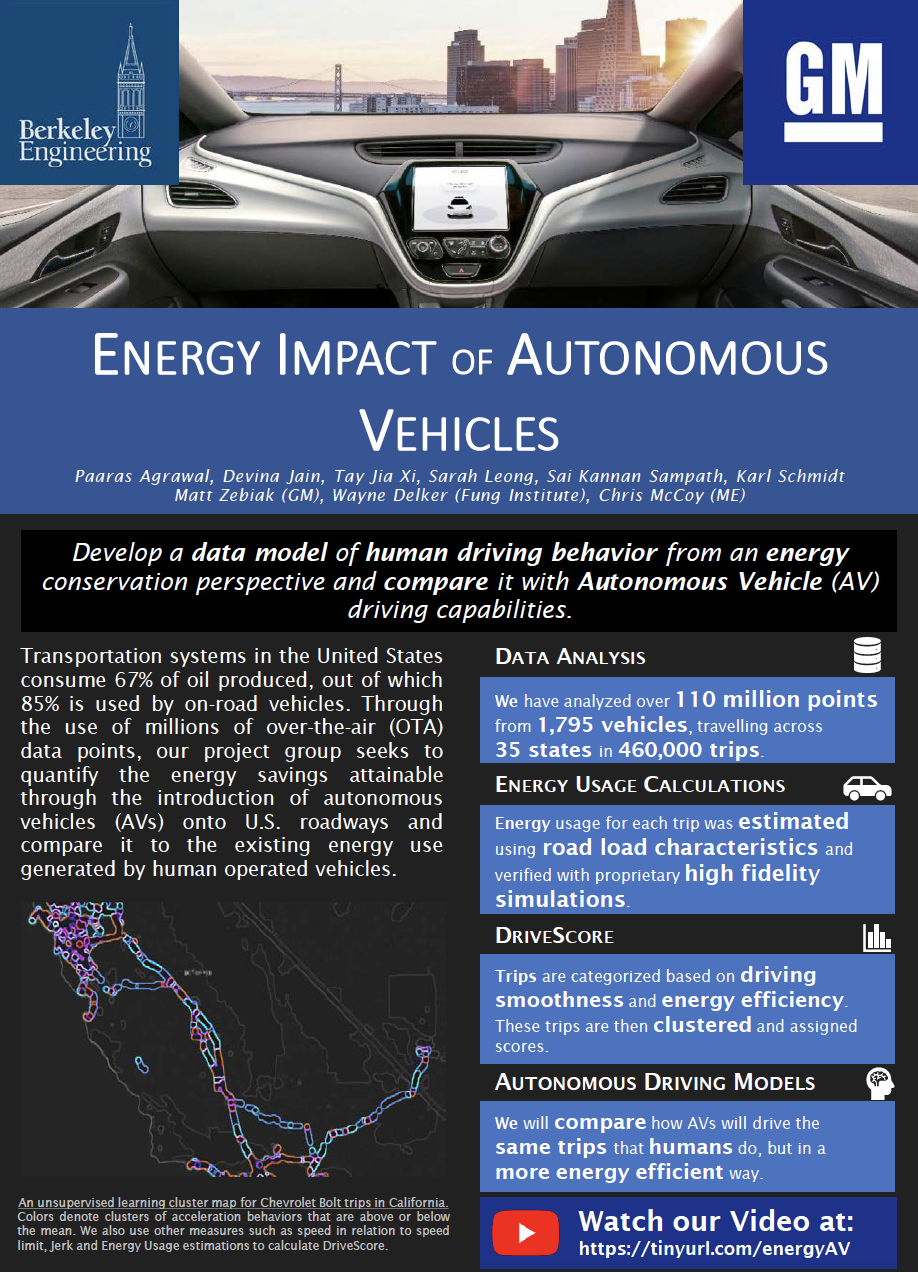The team worked with GM to quantify the energy savings attainable through the introduction of autonomous vehicles (AVs) onto U.S. roadways. They developed a data model that estimated energy usage for human-driving trips and compared it with that for AV trips.
Team: Paaras Agrawal, DevinaJain, Tay Jia Xi, Sarah Leong, Sai Kannan Sampath, Karl Schmidt
Advisors: Matt Zebiak (GM), Wayne Delker (Fung Institute), Chris McCoy (ME)
Transportation systems in the United States consume 67% of oil produced, out of which 85% is used by on-road vehicles. Through the use of millions of over-the-air (OTA) data points, our project group seeks to quantify the energy savings attainable through the introduction of autonomous vehicles (AVs) onto U.S. roadways and compare it to the existing energy use generated by human operated vehicles.
DATA ANALYSIS
We have analyzed over 110 million points from 1,795 vehicles, travelling across
35 states in 460,000 trips.
ENERGY USAGE CALCULATIONS
Energy usage for each trip was estimated using road load characteristics and verified with proprietary high fidelity simulations.
DRIVESCORE
Trips are categorized based on driving smoothness and energy efficiency. These trips are then clustered and assigned scores.
AUTONOMOUS DRIVING MODELS
We will compare how AVs will drive the same trips that humans do, but in a more energy efficient way.

← View all Capstone Projects





